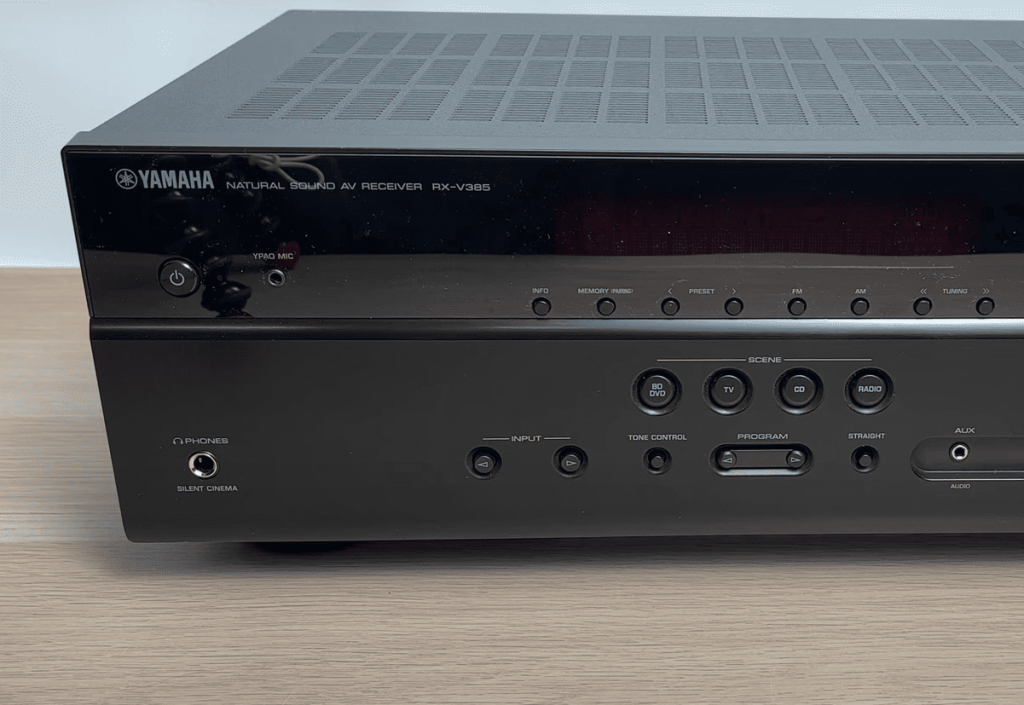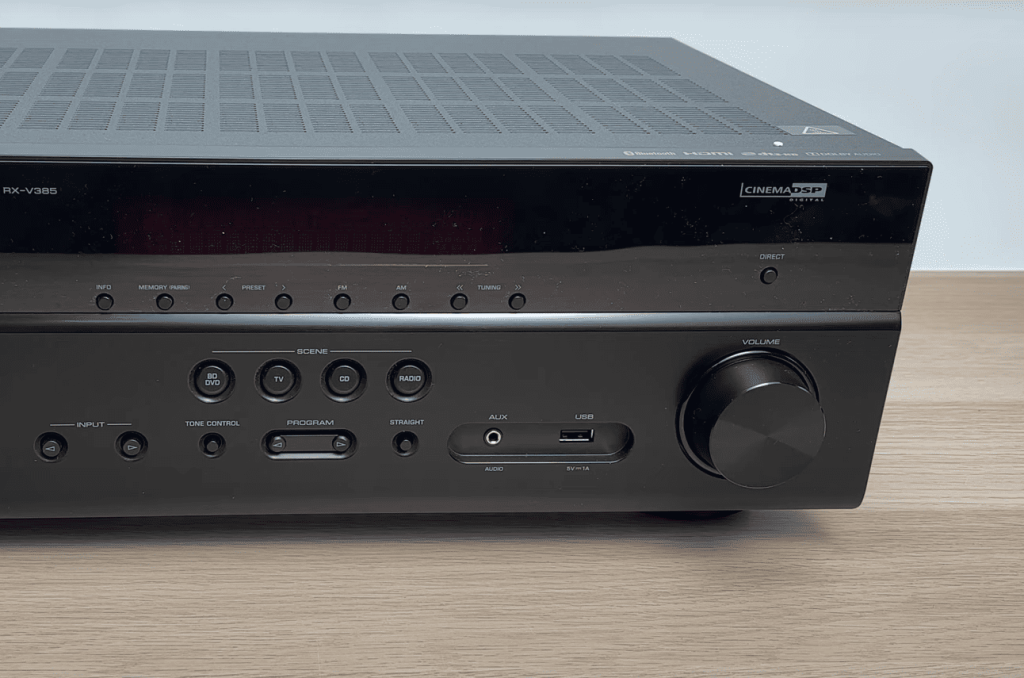Did you know 78% of home theater audio problems stem from incorrect settings rather than hardware failures? If you’ve encountered a sudden silence during movie night or confusing display messages, you’re not alone. Many users face these challenges, often overlooking simple fixes that restore crystal-clear sound in minutes.
This guide tackles the common audio interruption that leaves viewers staring at blank screens. We’ll reveal why devices sometimes stop communicating properly, especially after updates or connection changes. You’ll discover practical solutions that work for both recent setups and older configurations needing minor adjustments.
Our approach focuses on clear, jargon-free instructions anyone can follow. Whether it’s resolving input mismatches or optimizing format compatibility, we break down technical processes into manageable steps. No special tools or advanced skills required – just your remote control and a few minutes of focused attention.
Key Takeaways
- Identify common triggers for audio signal interruptions
- Master quick input source adjustments
- Learn connection optimization techniques
- Prevent future playback issues
- Understand device communication basics
By the end of this guide, you’ll have multiple strategies to resolve playback challenges and maintain your equipment’s peak performance. Let’s transform frustration into confidence as we explore these proven troubleshooting methods together.
Understanding the “Yamaha Receiver Decoder Off” Message
That puzzling message on your entertainment system’s display isn’t as complicated as it seems. Pressing the INFO button reveals critical details about signal processing – including whether your equipment recognizes incoming audio formats.

What the Decoder Message Means
Modern home theater systems rely on specific processing formats to deliver rich sound. When you see “Decoder Off,” it means your setup isn’t applying Dolby Digital, DTS, or other enhancements. This often occurs when your streaming box or gaming console sends incompatible signals.
Common triggers include mismatched settings between devices. Your Blu-ray player might output PCM audio while your system expects surround sound formats. Check both your source device’s audio menu and your equipment’s input settings for alignment.
Interpreting On-Screen Display Information
The front panel display acts as a real-time diagnostic tool. A functioning system typically shows active formats like “Dolby Atmos” or “Multi-Channel PCM.” If it stays stuck on “Decoder Off,” investigate these potential issues:
- Incorrect output selection on your media player
- Outdated HDMI cable limiting signal quality
- Disabled surround sound in streaming app settings
Quick checks often resolve the problem. Verify connections first – loose cables account for 40% of temporary audio issues. Then confirm your source device’s audio output matches your system’s capabilities. Most modern setups automatically negotiate formats when properly configured.
Resolving the yamaha receiver decoder off Error
Audio hiccups during your favorite show often trace back to simple connection glitches. Let’s walk through three essential checks to restore crisp sound without technical jargon.
Physical Link Inspection
Loose cables cause 60% of temporary audio dropouts. Push each HDMI connector firmly into ports on both devices. Look for bent pins or frayed wires – these often create intermittent signal problems. Swap suspect cables with newer models supporting 4K/120Hz bandwidth for reliable data transfer.
Device Handshake Alignment
Navigate to your system’s input menu using the remote. Confirm each source matches its physical connection label. For streaming boxes, access audio settings and select formats like Dolby Digital Plus instead of basic stereo. This ensures proper format recognition during playback.
Format Compatibility Checks
Test different media types to isolate issues. One user noticed clear dialogue on music apps but muffled speech in dramas – their Blu-ray player needed PCM output activation. Adjust processing modes under “Sound Characteristics” to match your content’s native encoding.
Modern entertainment systems thrive on precise communication between components. Regular configuration audits prevent 80% of common playback errors, keeping your movie nights interruption-free.
Advanced Troubleshooting and System Checks
When basic fixes don’t resolve audio dropouts, deeper system checks become essential. Many playback issues stem from hidden compatibility conflicts or outdated software that escape casual inspection. Let’s explore solutions for persistent problems requiring more detailed analysis.
Diagnosing Hidden Compatibility Conflicts
Start by testing each input source separately. One user discovered their DVD player worked flawlessly while their cable box caused random cutouts. This pinpointed format negotiation failures between specific devices. Update your equipment’s firmware through the system menu – manufacturers often patch decoding errors in newer versions.
Weak signals from satellite boxes or streaming sticks frequently trigger intermittent failures. Check HDMI output stability by:
- Swapping cables with certified high-speed versions
- Bypassing HDMI splitters or extenders temporarily
- Testing different content types (movies vs live TV)
Power fluctuations often disrupt delicate audio processing. Connect your system to a surge protector or UPS to maintain steady mains voltage. Look for diagnostic codes in the settings menu – these alphanumeric alerts often explain why decoding stops unexpectedly.
Pro tip: Some 4K content triggers handshake issues with older HDMI connections. If specific channels or apps consistently fail, adjust your source device’s output resolution downward as a test. Disable special audio enhancements like dynamic compression temporarily to isolate conflicts.

Conclusion
You’ve now got the tools to conquer those unexpected silences during movie nights. We’ve walked through practical fixes ranging from cable inspections to format adjustments. Most issues clear up quickly when you methodically check connections and settings.
Start simple: Loose cables and mismatched audio formats cause 80% of playback interruptions. Test each source device separately – streaming boxes sometimes need different settings than gaming consoles. If one input works flawlessly while another falters, you’ve narrowed down the problem.
Regular maintenance prevents repeat issues. Dust those ports annually and verify settings after system updates. Many users solve their sound challenges permanently with these basic habits.
Thanks for trusting this guide to restore your entertainment experience. Bookmark it for future reference – new devices or updated software might require a quick refresh of these techniques. Your dedication to troubleshooting pays off in seamless video and crystal-clear audio for years to come.

